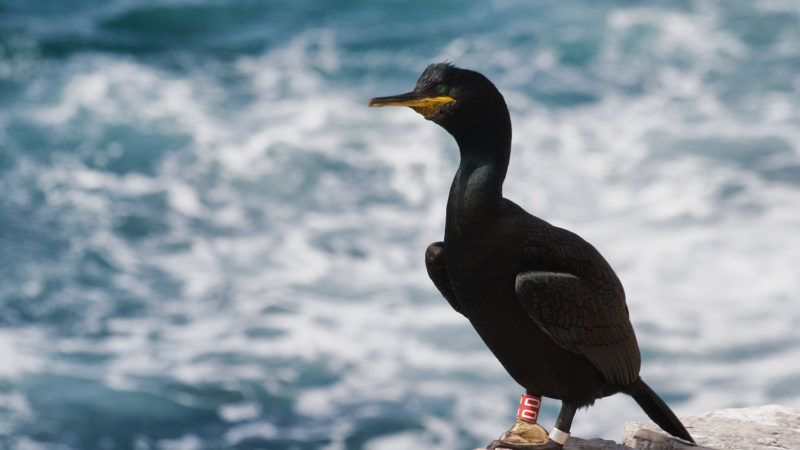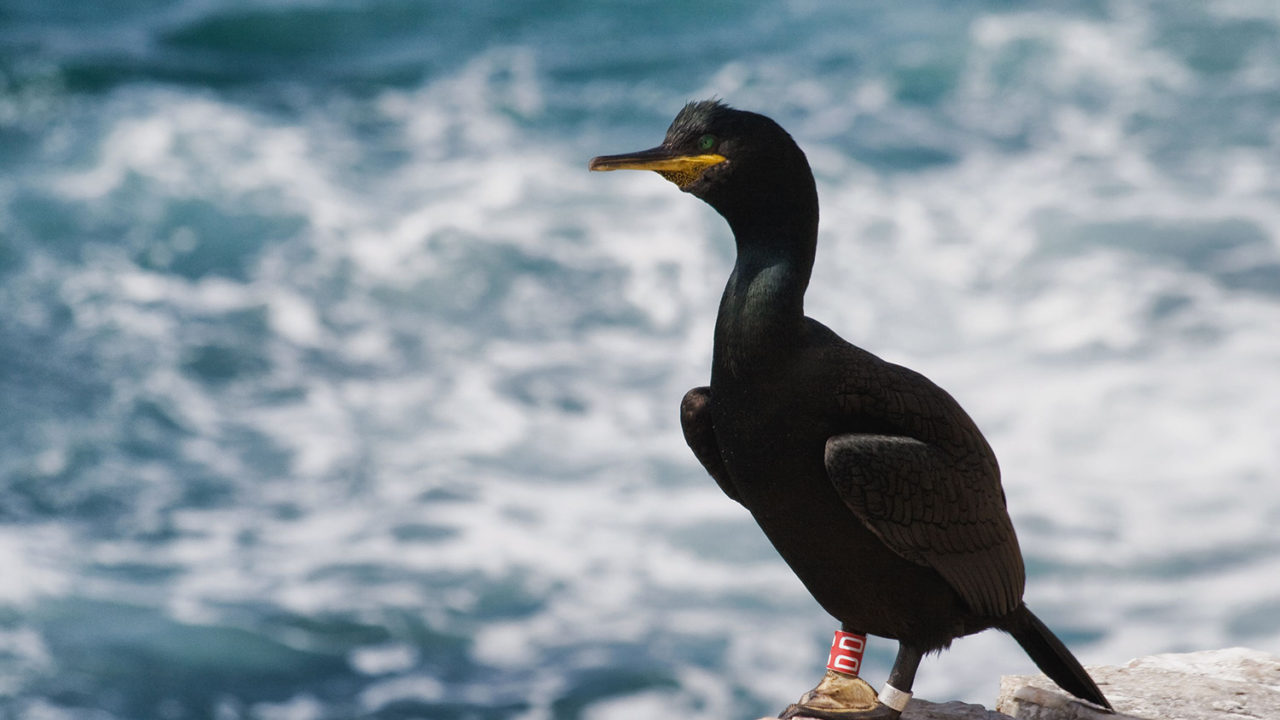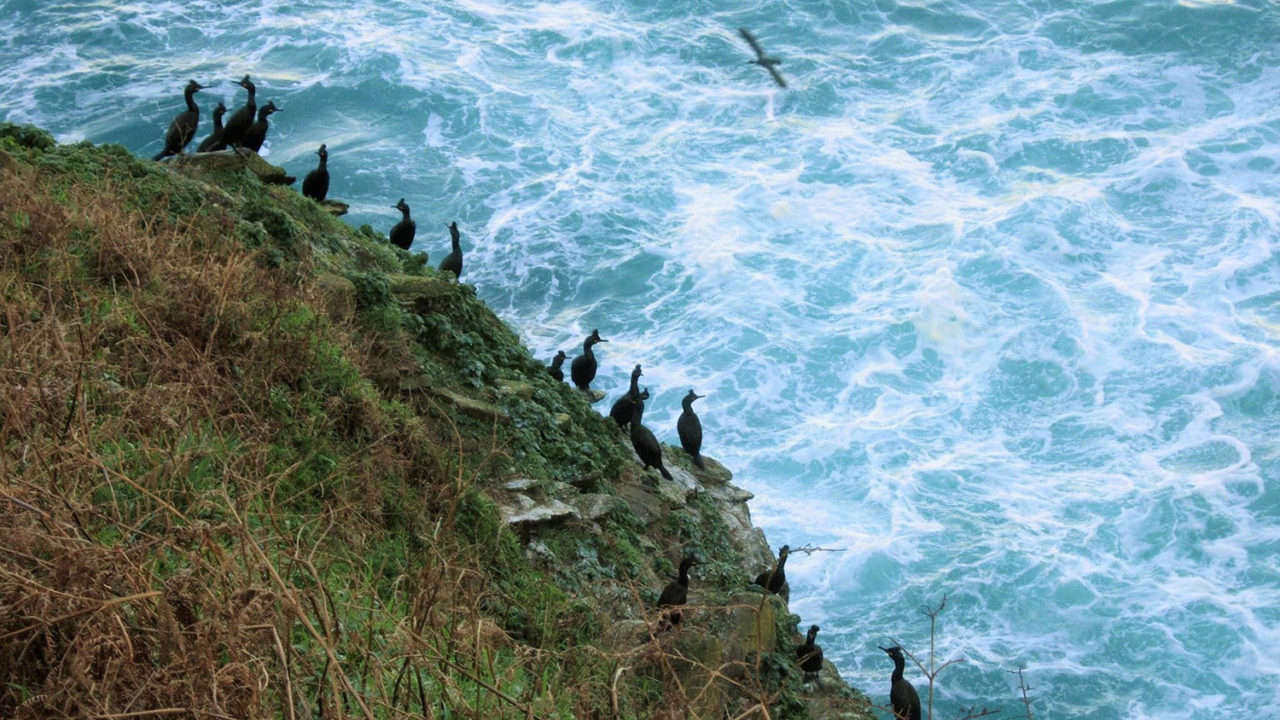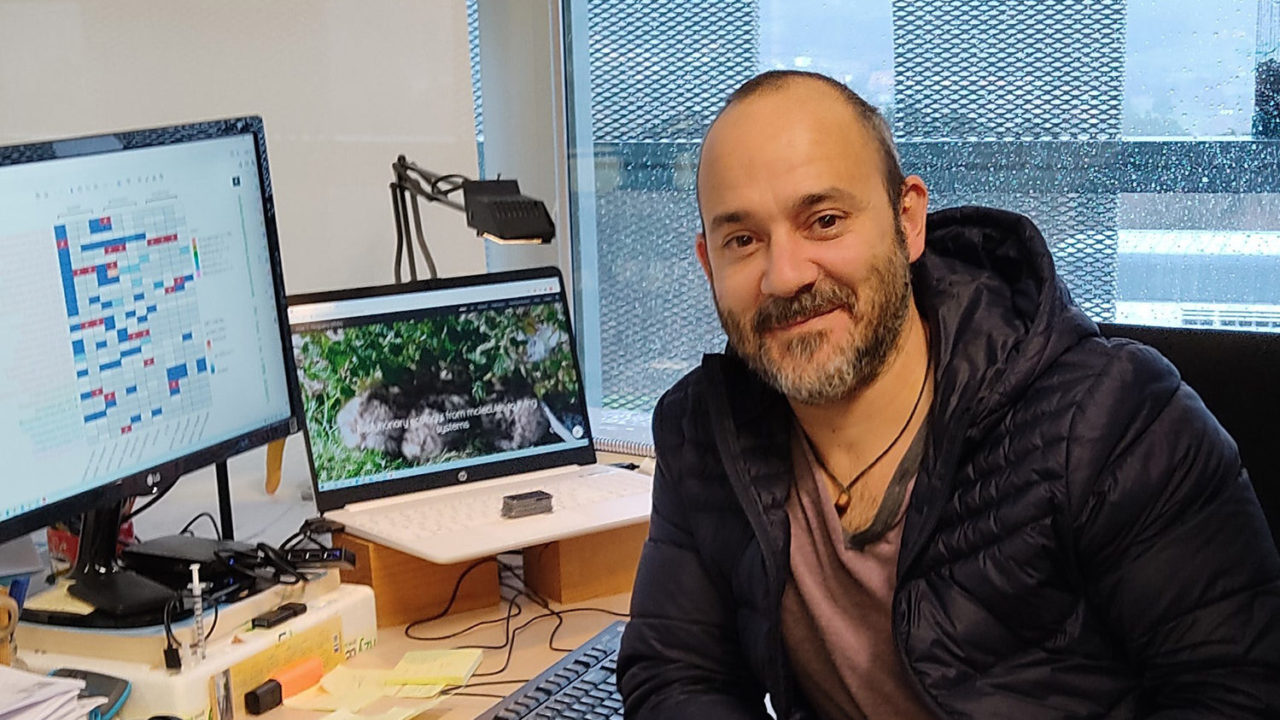The Animal Ecology group (GEA) of the Marine Research Centre (CIM) of the University of Vigo has just obtained funding from the Biodiversity Foundation, dependent on the Ministry for the Ecological Transition and the Demographic Challenge, to launch the Encorat project. With this project, José Carlos Noguera (GEA, CIM) and his collaborators intend to reduce the shag mortality (Phalacrocorax aristotelis), a threatened species with an important population in Galicia, in the gill gear of Galician and Asturian waters.
The shag is a seabird that lives in the rocky stretches of the coast. In recent years, it has been especially threatened and its population has experienced a significant decline throughout Spain. The overfishing of its prey species, oil pollution and accidents that occur in fishing gear, are among the main causes of this population decline. The most important population of the entire Iberian Peninsula is in Galicia. The GEA research staff, coordinated by Alberto Velando, has spent years studying the evolution of this species and looking for solutions that protect its survival. Among the conclusions of their studies, they detected that one of the most important threats is the accidental mortality that occurs in gill fishing gear, especially in the popular “trammel”.
For this reason, the objective of the project is to reduce the mortality of this species in gill gear, for which the researchers will work, throughout this 2021, in the waters of Galicia and Asturias. The project, led by GEA researcher José Carlos Noguera, has a budget of around 83,000 € co-financed by the European Maritime and Fisheries Fund (FEMP 2020). As the coordinator of the study explains, the purpose of Encorat is twofold, since the effectiveness of a prototype that avoids accidents will be studied at the same time that a study on the distribution of birds will be carried out. Along with Noguera, professors Alberto Velando and Sin-Yeon Kim, from the Animal Ecology Group (CIM), and technicians Álvaro and David Álvarez, from the University of Oviedo, are part of this project.
Avoid accidents and know the distribution of this species
Regarding the first part of the project, the researchers intend to reduce the accidental capture of the shag by installing LED-type luminous devices in the networks. “These lights will allowed the shags to detect the presence of nets in the water and thus avoid them,” José Carlos Noguera says. The possible effect of lights on the capture of commercial fish species will also be studied, “since what is intended is to reduce the mortality of shags without affecting fishing performance.”
The second part of the project will focus on marking a significant number of juvenile shags, which is “the sector of the population most affected by this mortality”, with GPS tracking devices in order to know in detail their areas of distribution and see in which measure they overlap with the areas of greater fishing pressure”.
The intention of the researchers is, if the project achieves the expected objectives, these types of measures are applied “where the most important mortalities are occurring” of this species and also “in a generalized way” within protected natural areas by the Natura Network “that have important populations” of this seabird, including the National Park of the Atlantic Islands of Galicia.
Working day
The collaboration of brotherhoods, NGOs and other associations is very important for the development of the project, so on February 22, the researchers will participate in a dissemination day about the project to bring it closer to all sectors involved in this field. The conference will be in virtual mode and will disseminate through the CIM’s social website and networks.
More information in the DUVI.




